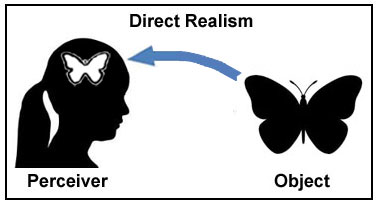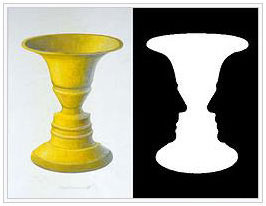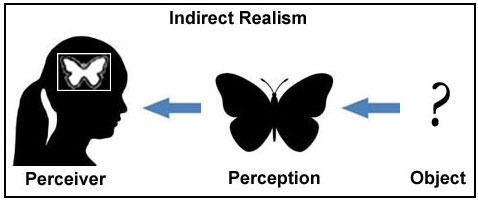Direct vs. Indirect Realism Direct
Realism
The realist view is that we perceive objects as they really are. That objects are not represented to us by ideas but are directly presented to the consciousness. Objects are composed of matter, occupy space and have properties (size, shape, texture, smell, taste, color). They obey the laws of physics and retain all their properties whether or not there is anyone to observe them. According to this view physical objects are mind-independent. Berkeley demonstrates that mind-independent physical objects not only don’t exist, but cannot exist. Berkeley asks us to imagine an object independent of any mind. However, the object you have just imagined is not independent of any mind since it is dependent upon your mind. This way, a mind-independent object is not an object at all, since no one is perceiving it.
The main problem with direct realism is that many things about the world can’t be known by direct experienced. Further, taking objects at face value doesn’t always work such as visual or optical illusions: interpretations of color due to the amount of light, a mirage 'lake' in the desert, the broken 'straw' in a glass of water. Indirect
Realism
Indirect Realism is broadly equivalent to the accepted view of perception in natural science that states that we do not and cannot perceive the external world as it really is but know only our ideas and interpretations of the way the world is. However, if Indirect Realism is true it would be impossible for us to achieve knowledge of the physical world exactly because we are cut off from any direct perceptual access to that world. In short, Indirect Realism puts one in an odd, some say unacceptable, epistemological position. The ‘Rationalist’ takes caution with the idea that knowledge can only come from the senses. They are well aware that the senses could mislead by illusion and deception. In ‘A Critique of Pure Reason’, Immanuel Kant argued for Indirect Realism and used the term Noumenon to describe knowledge of an object without the use of the senses. z |


